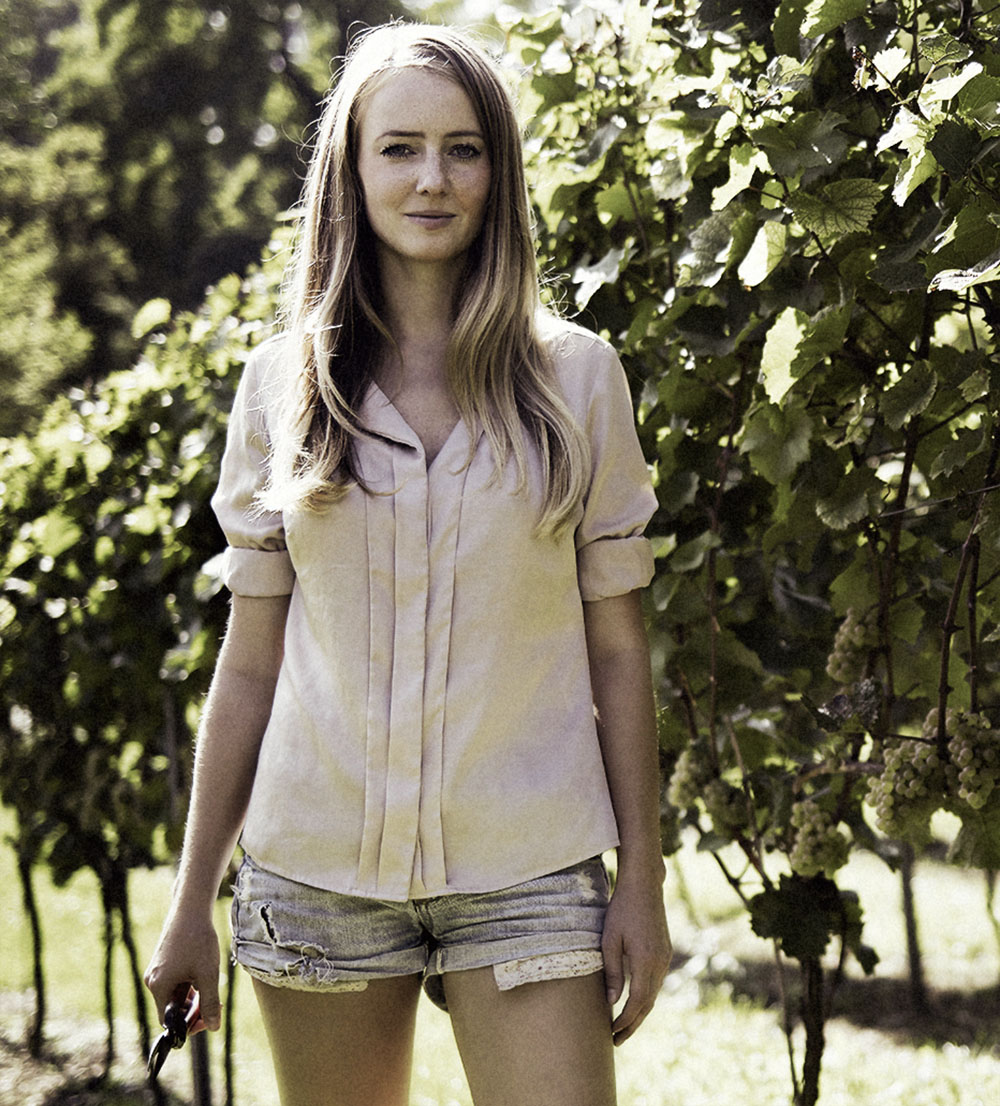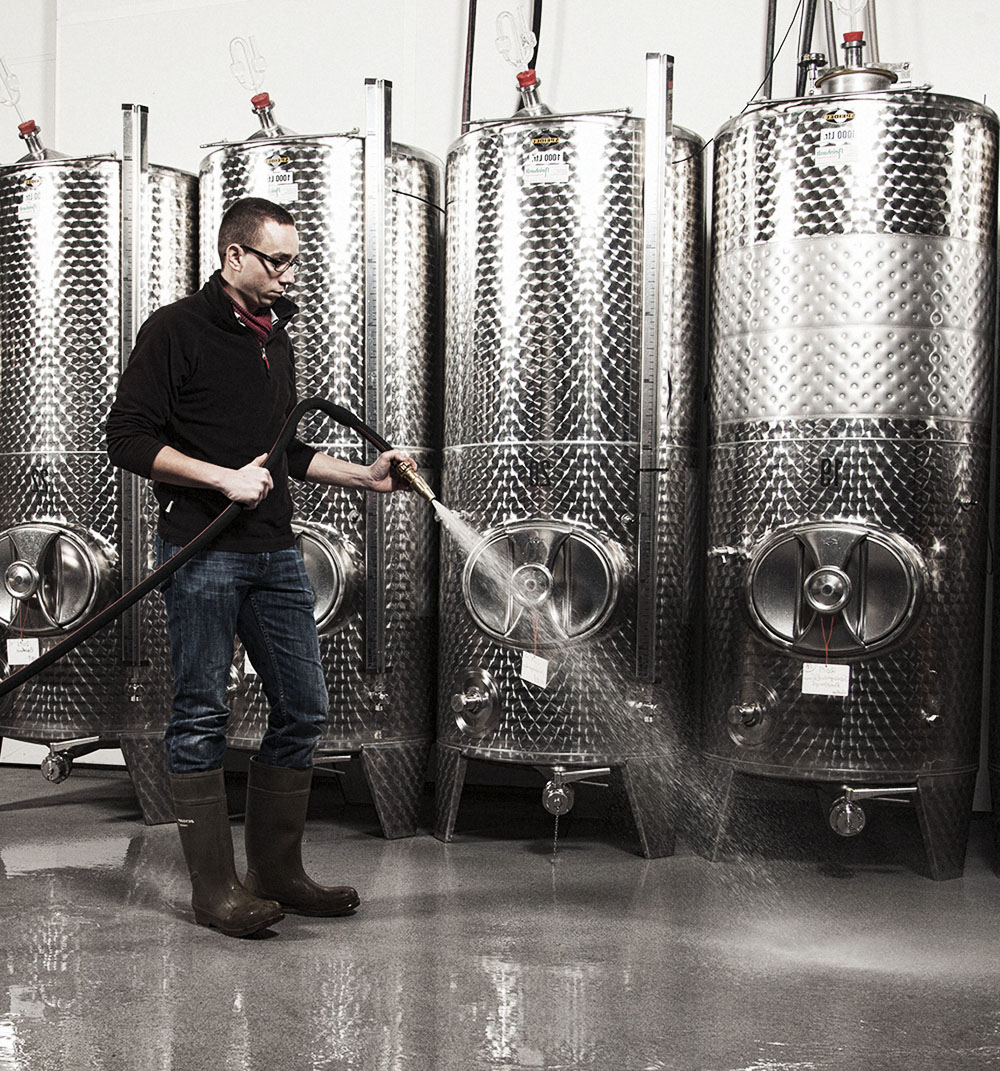Meet Juliane Eller, the brains behind Rheinhessen’s JuWel Weine. Raised in a grape-growing family, she says, “I knew very much that I wanted to make my own wine.”
She finished her Geisenheim studies in 2013, when she was just 23.
“Two days after I came home, I said to my mum and dad: ‘Let’s change everything! Are you with me?’ And they said: ‘Yes. Let’s do it!’ And now we are growing together.”
Today, with an air of quiet confidence well beyond her 26 years, Eller has three vintages under her belt. She works closely with her sister, who handles the tasting room and marketing, as they reshape the family’s 25-year-old commercial vineyard into a 21st-century winery, complete with a refreshing, updated look she herself conceived.
JuWel is both a contraction of her name and a play on words, with a clean-lined diamond logo that’s a nod to the process. “Grapes are the rough diamonds of what I’m doing,” she says, “And that’s the idea behind the logo.”
Eller has narrowed production down to five varieties that make sense from both viticultural and commercial standpoints: Riesling, Weissburgunder, Grauburgunder, Silvaner and Spätburgunder. The winery’s 120,000-bottle-and-growing annual production is now entirely hand-picked. Plus, “even though it’s not easy,” JuWel is transitioning from conventional to organic farming.
Although her parents agreed to help Eller follow her own ideas, there was still plenty of pressure in those first couple of years, she says. Now, however, “People are really interested,” so much so that the winery is selling out its production.
Eller says she’s far from alone in transforming what came before. Her Geisenheim class included nine young women, from wine regions around Germany. “At one point,” she recalls, “our professor asked what we were going to do after we finished our studies. Nine girls raised their hands and said they were going to start their own business, or go home and work in the family business.”
“The change is working very positively,” she suggests, “especially as there’s a new spirit of collaboration in the younger generation. It’s not only the young winemakers who are transforming Germany but also the young wine drinkers. So many young people are interested in Riesling but they’re also interested in exploring Grauburgunder and other varieties.”
Eller says there’s no question her younger clientele has a handle on what she’s doing. Also, just as important, “They’re prepared to pay for it. ‘Because,’ they say, ‘We know what it’s worth.'”


